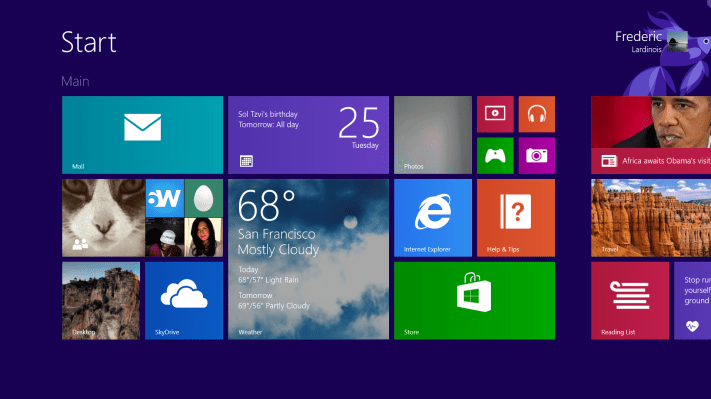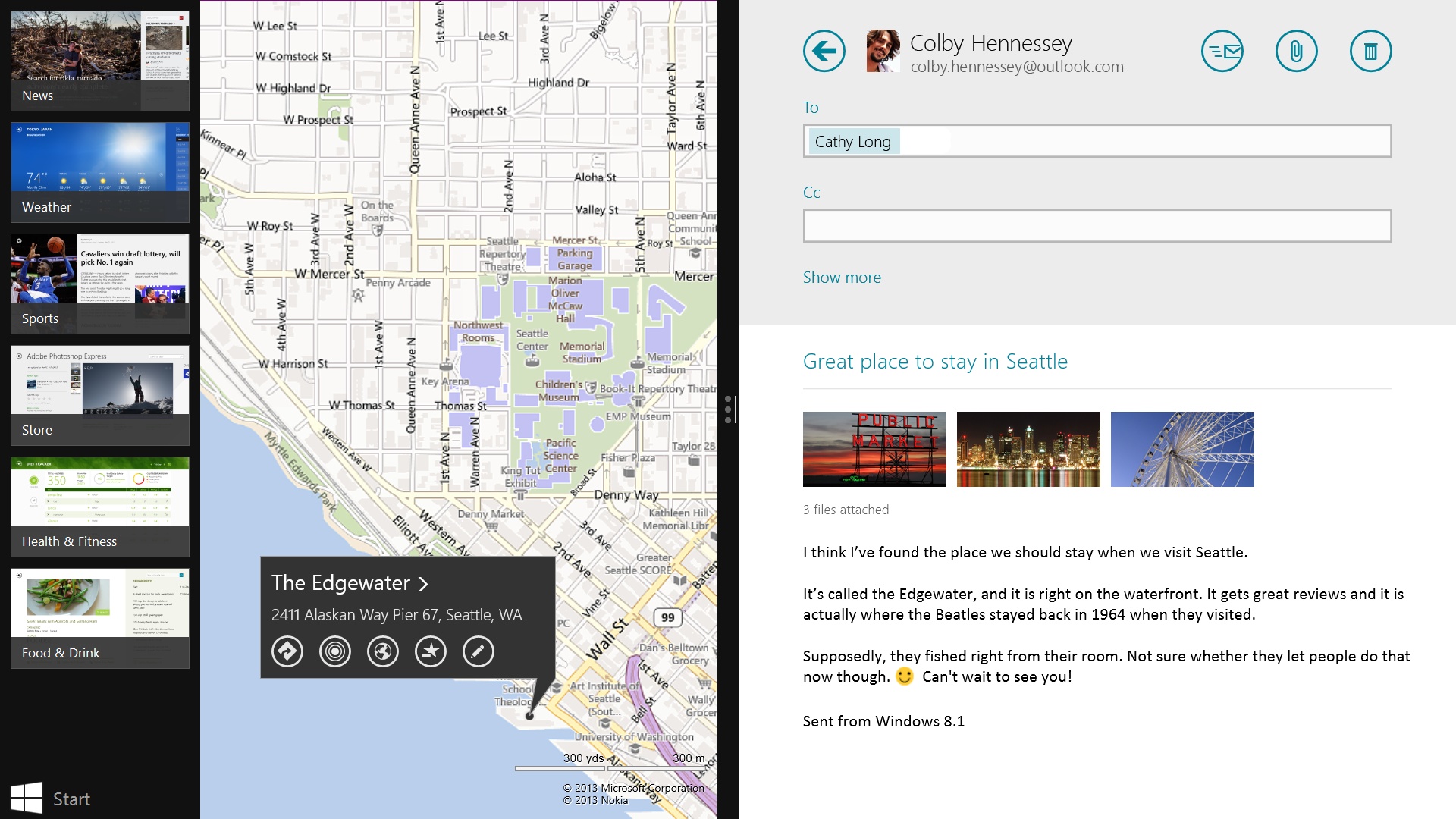The Windows 8.1 Preview version has now been out for over a week. One of the highlights of this update is the return of the Start button (but not the Start menu), and after using the new version for a while, it becomes clear that, despite this concession, the old desktop isn’t coming back. All the interesting new stuff in Windows 8.1 is meant for touchscreen devices and is happening on the Metro/Windows 8 side of the operating system. The desktop is now an afterthought for Microsoft.
For business users, Microsoft has added new security features to Windows 8.1 that mostly matter on the desktop, but besides that, none of the more interesting new tools involve the desktop at all. The new Search tool, which is very good, runs in the Windows 8 mode. Xbox Music, with the new radio mode, only exists as a Metro-style app. The same is true for the recipe app with the Kinect-like hands-free mode, SkyDrive, reading lists, the improved Mail app and even Internet Explorer 11, which gets a minor interface update in the touch-based Windows 8 mode but not on the desktop. In addition, all of the new and much-needed features for multiscreen setups are for users running Windows 8 apps.
Indeed, the more I used Windows 8.1, the more it started to feel like a tablet OS with the desktop bolted on. While using the first version, it felt the other way around. Now that you can resize Windows 8 apps at will and use more than two apps at a time, Windows 8 finally feels like a full-blown tablet operating system that, with the right apps, could rival what we’re seeing from Apple and Google.
Seeing your emails and the browser side-by-side when you click on a link in a message just makes sense and feels natural once you’ve tried it a few times, for example. Some apps, including Skype, haven’t been updated to work well in this new mode yet, but they will surely be updated before 8.1 is released.
We also know that Microsoft is about to launch its Office apps for Windows 8, so for many business users, switching to the desktop could soon become unnecessary, too.
One issue with the tablet mode is that many of the gestures, such as swiping in from the left and quickly swiping back to bring up your list of apps running in the background, aren’t exactly intuitive (and this gesture is also the only way to put two apps side-by-side). But once you get used to it, Windows 8 starts to feel like a modern tablet operating system.
Every now and then, though, you end up on the desktop and you remember that this is now really a legacy mode. It feels like an afterthought for Microsoft, which is betting that we’ll all use touch screens within the next few years. Except for the Start button, it has remained virtually untouched in Windows 8.1. Even the Settings menu, which previously condemned you to a desktop session to do anything meaningful, is now a Windows 8 app. Microsoft has to support it for the foreseeable future, but more and more, it seems like we’re not dealing with an operating system that has a split personality, but one that has a very dominant side while the other one is allowed to tag along for the ride.


